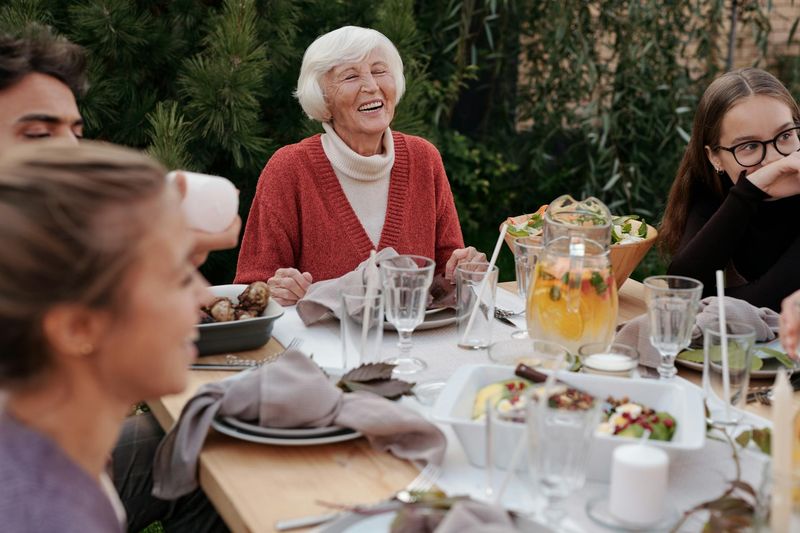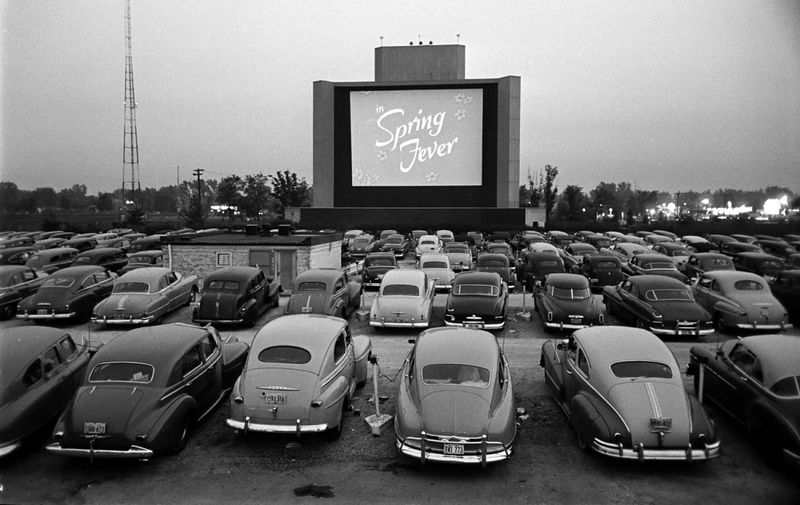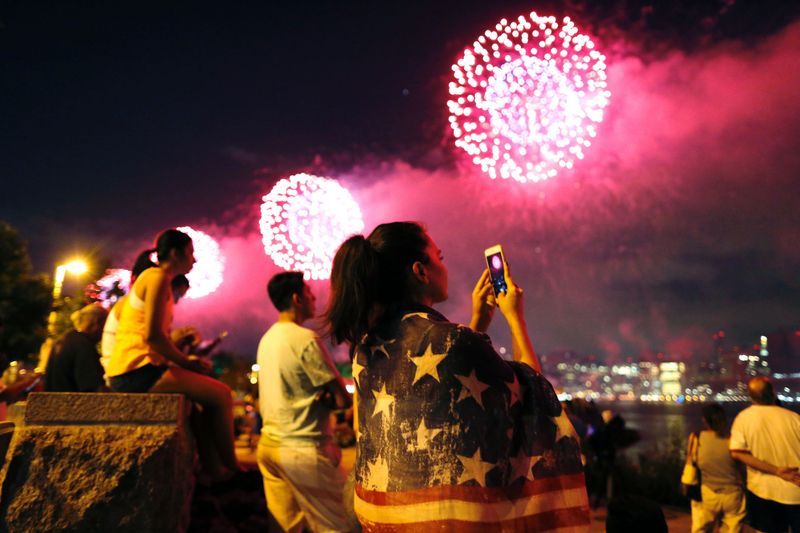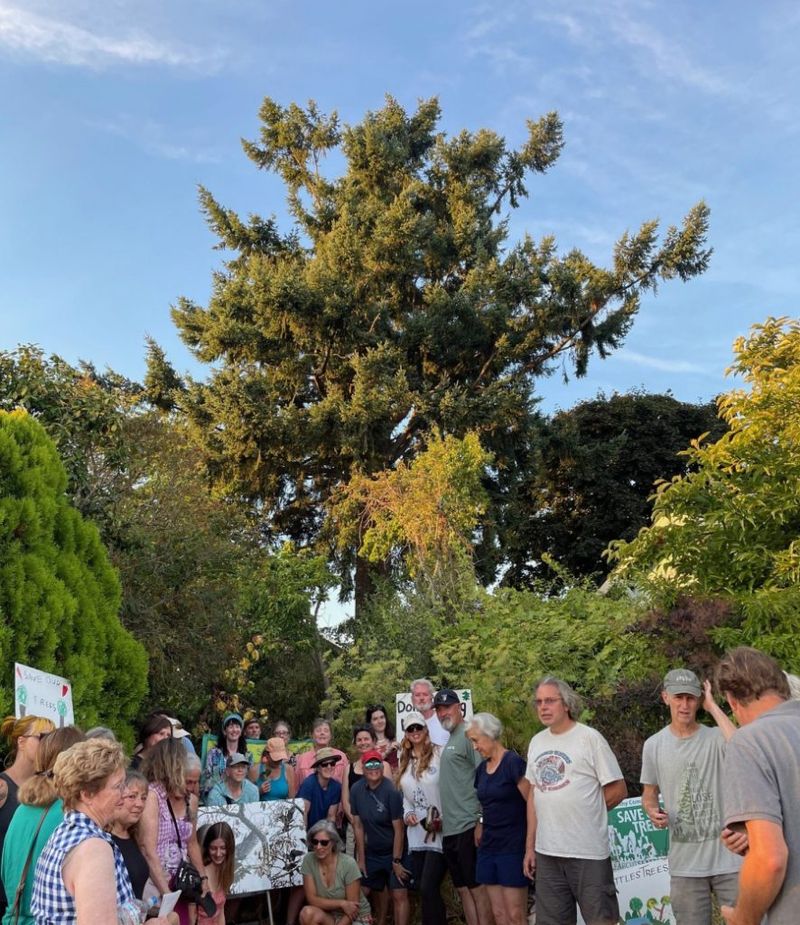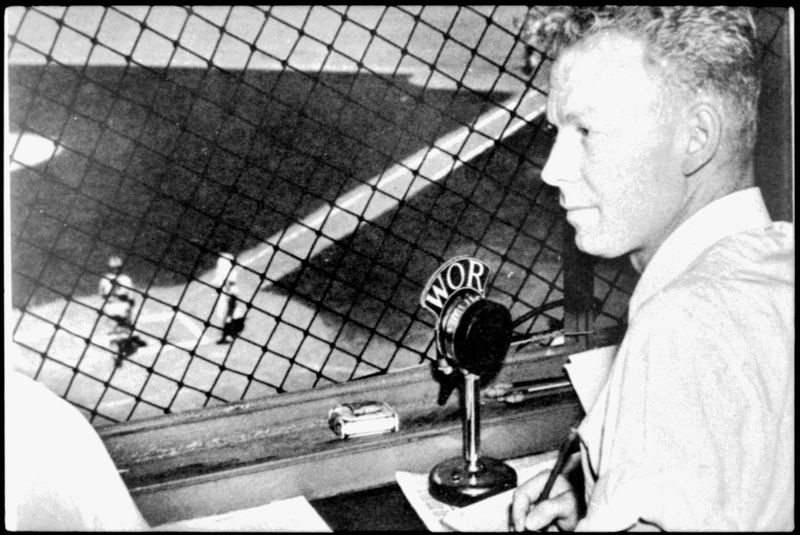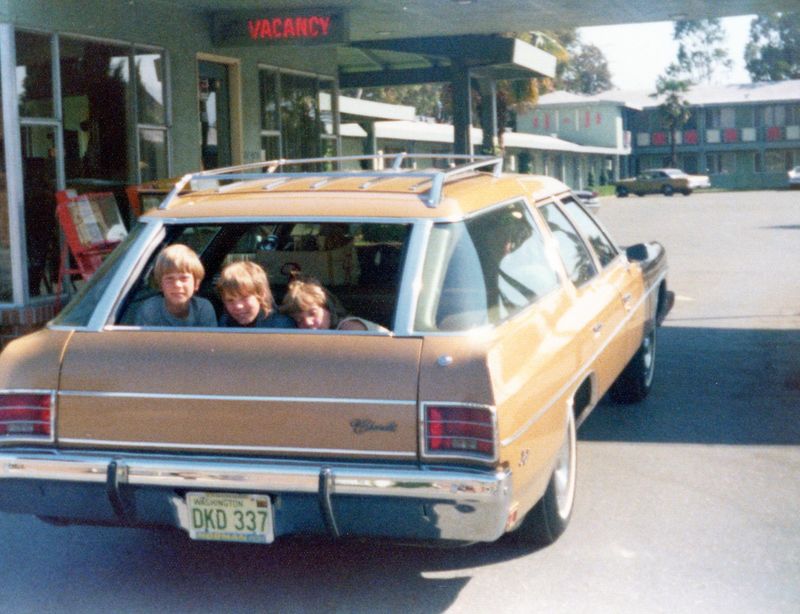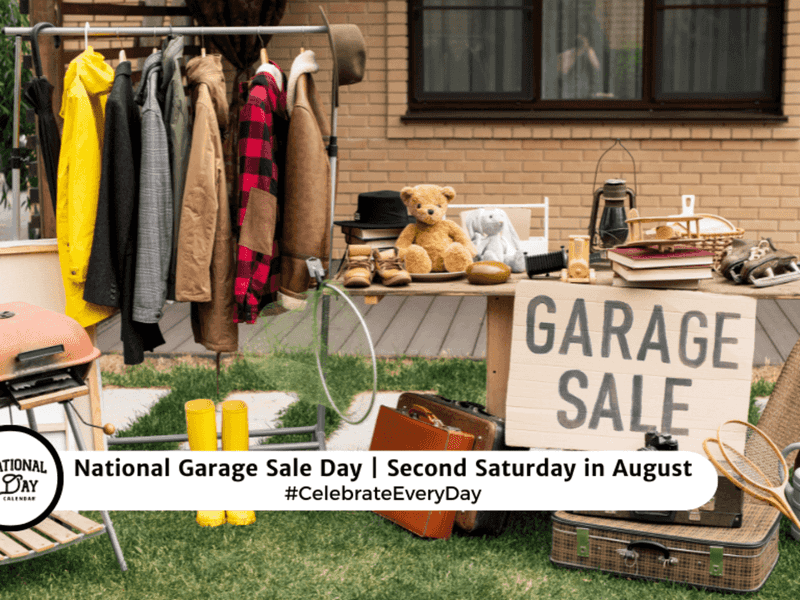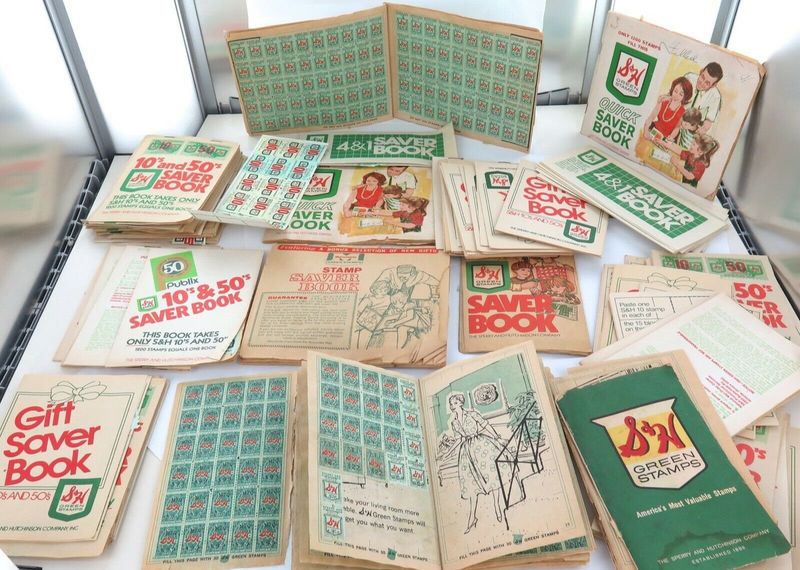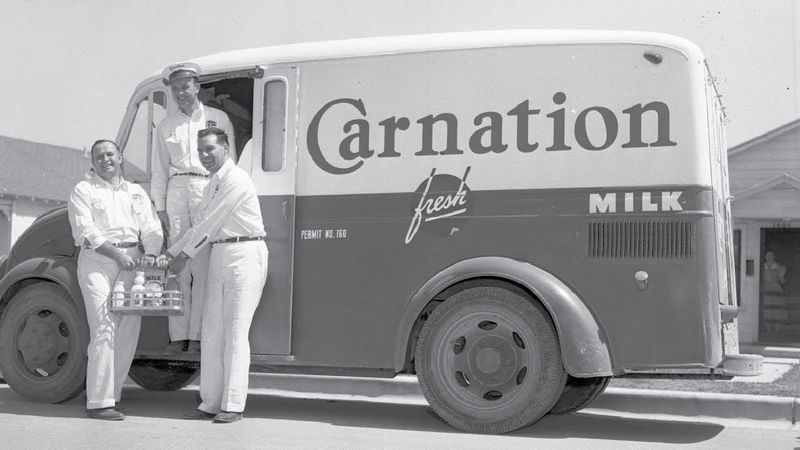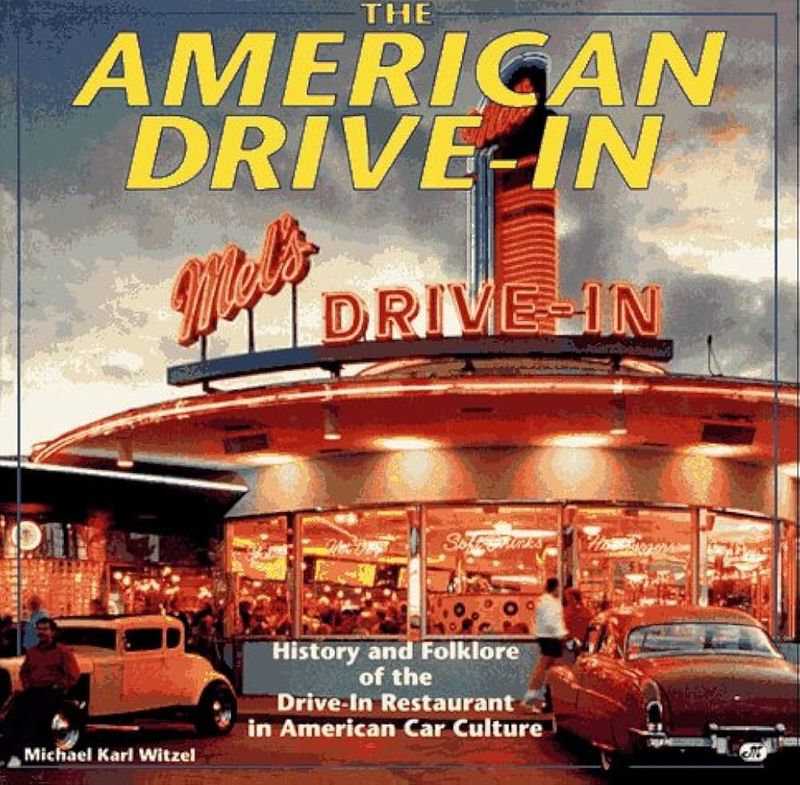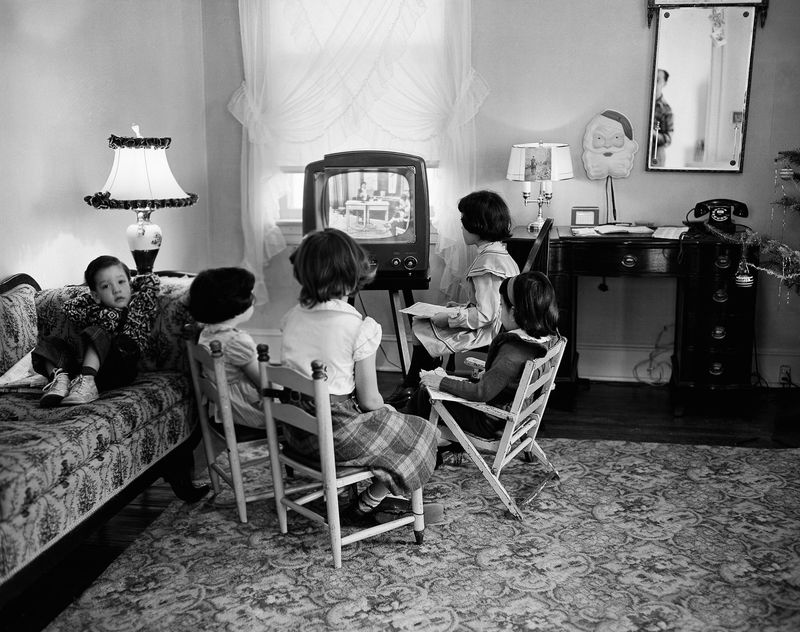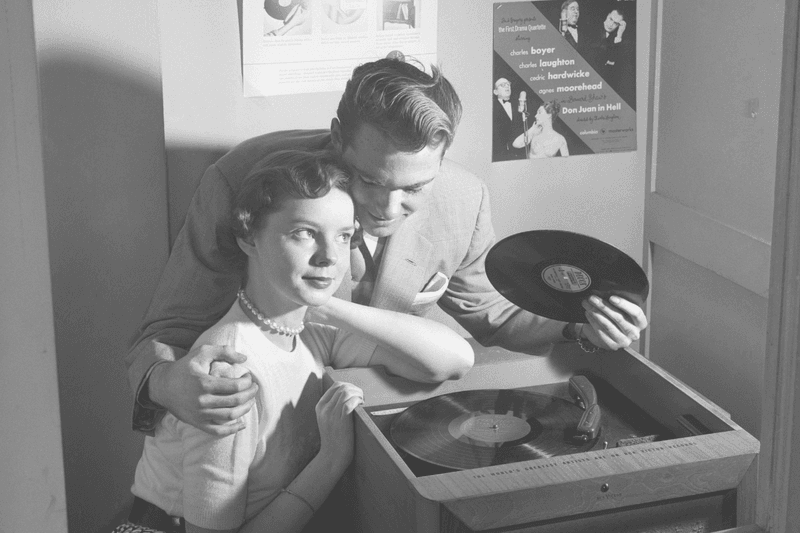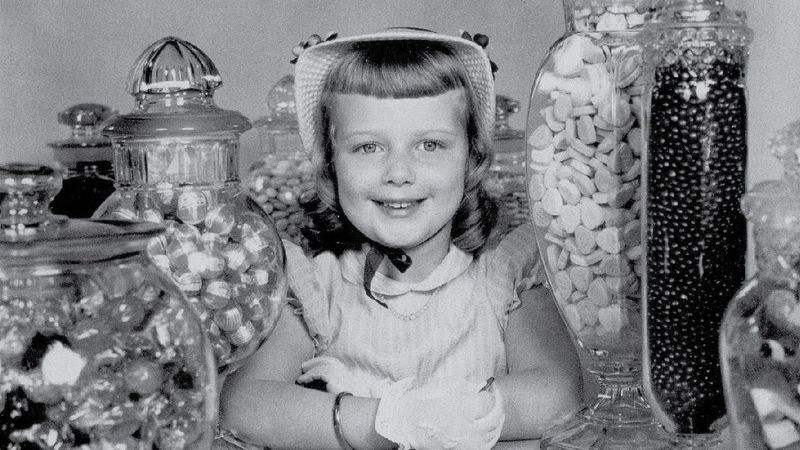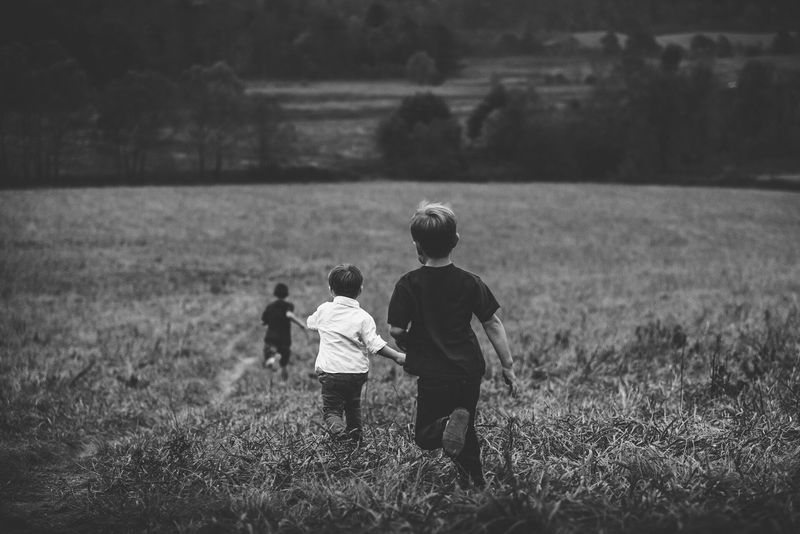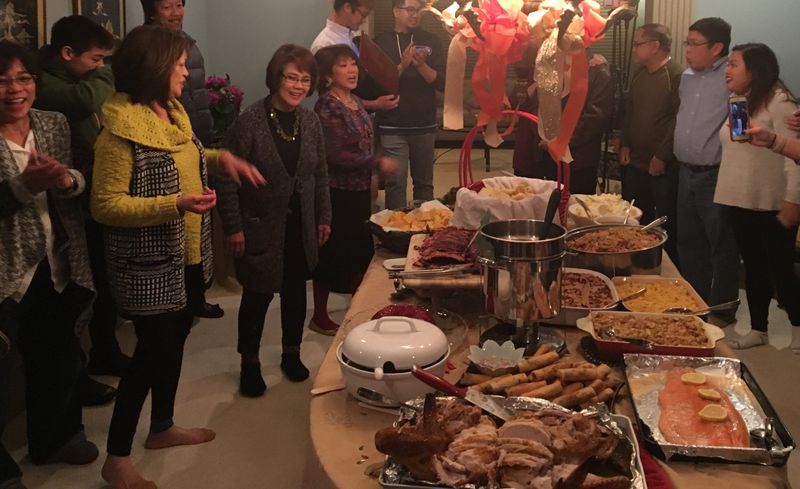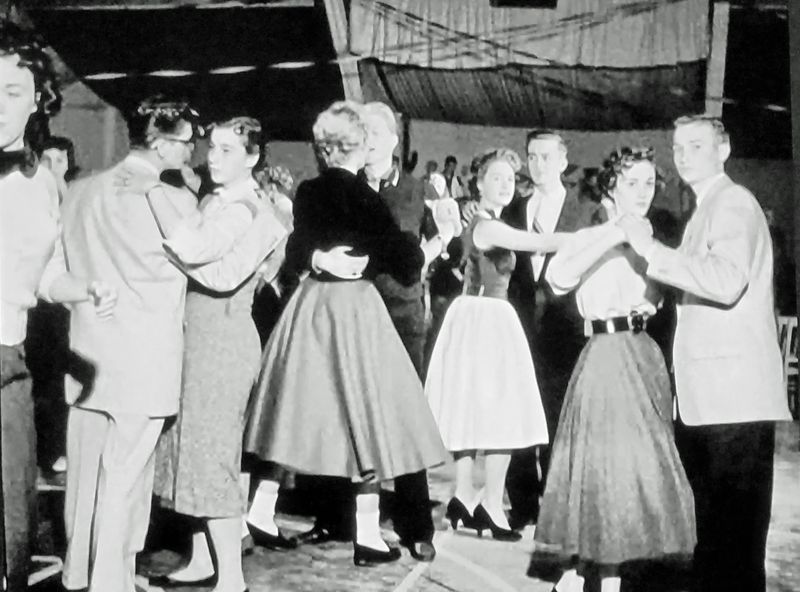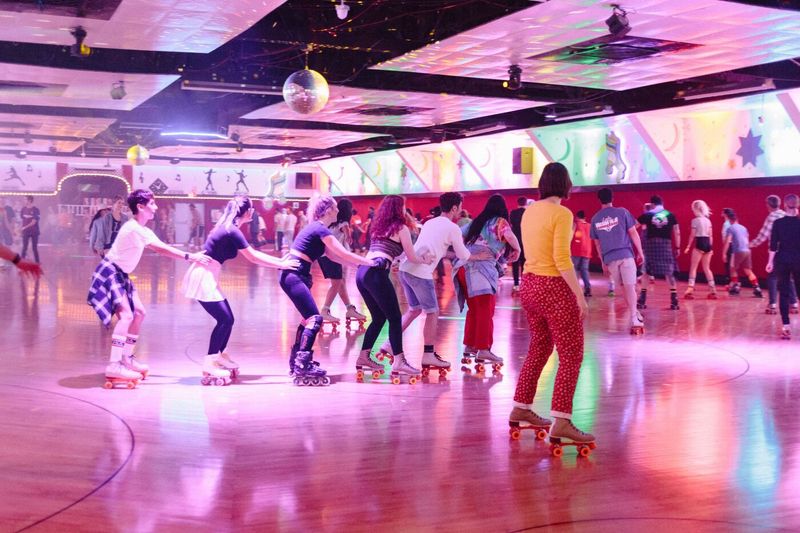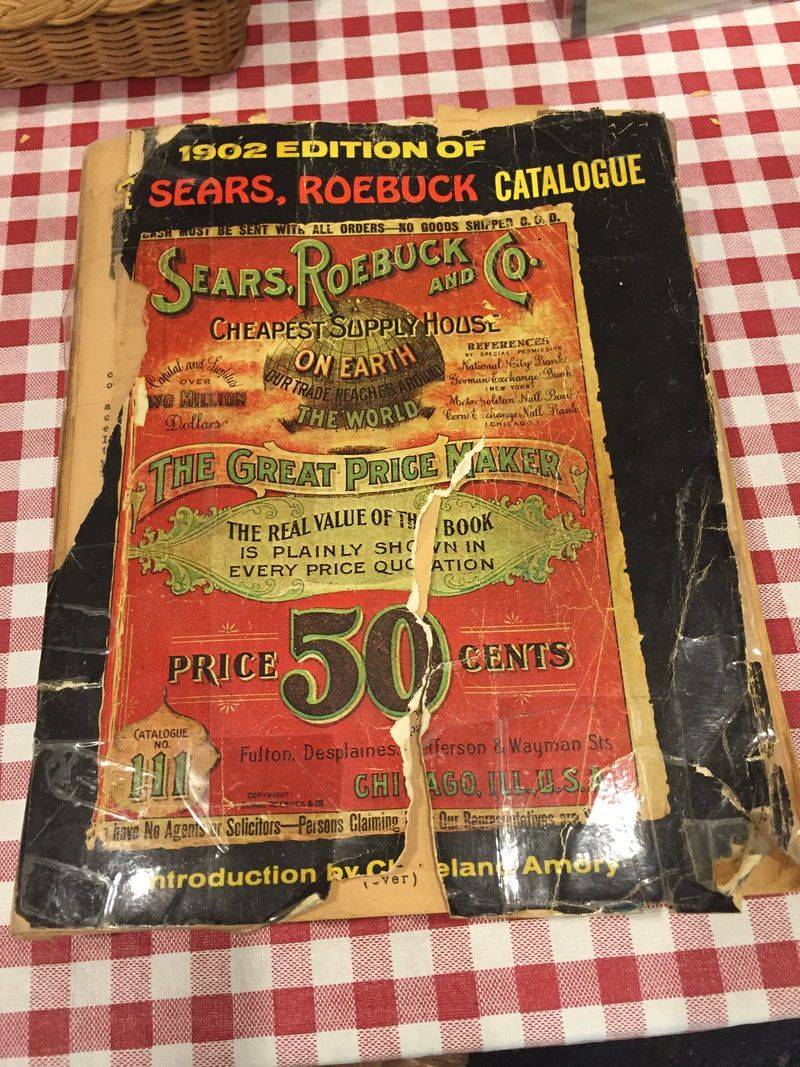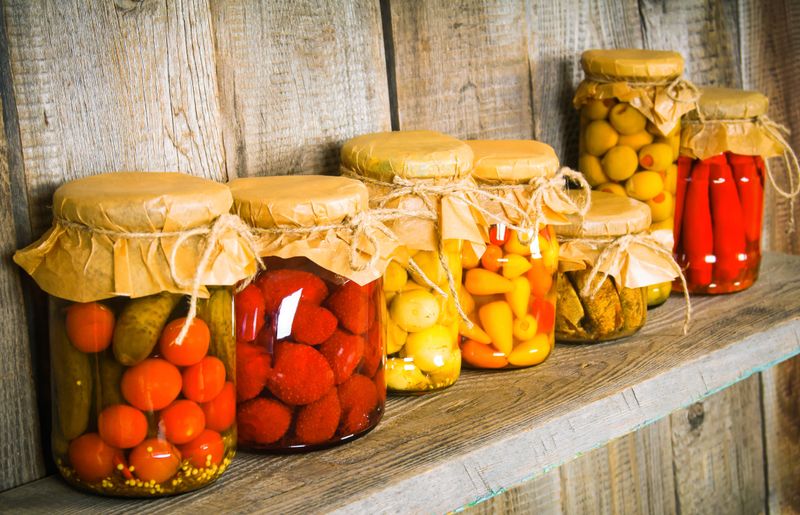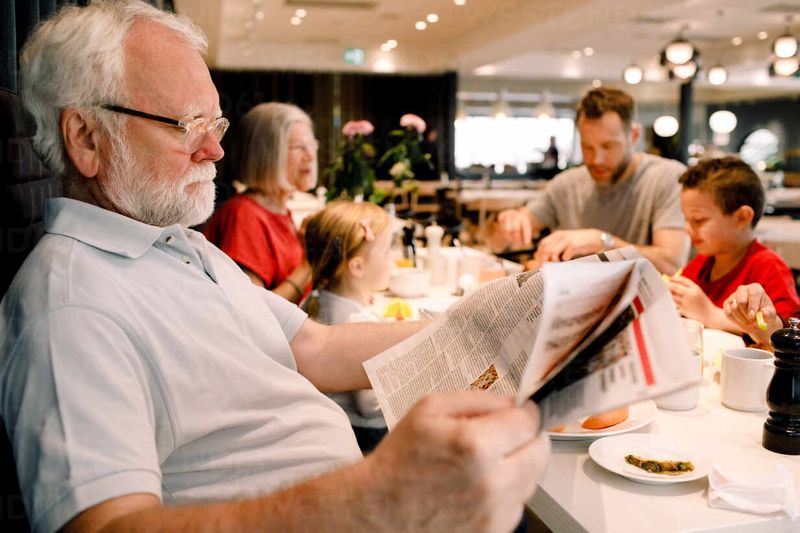Explore the quintessential traditions that shaped the lives of the boomer generation. These all-American customs reflect a bygone era filled with family, community, and simple pleasures.
1. Sunday Family Dinners
Sunday dinners were a ritual for many boomer families, a time when everyone gathered around the table to share a hearty meal. It was a moment to connect, discuss the week, and enjoy each other’s company. The aroma of roast chicken or pot roast often filled the air.
This tradition emphasized the importance of family unity and togetherness. Parents, children, and sometimes extended family members participated in these cherished gatherings.
The meals often included homemade dishes, with recipes passed down through generations. This practice fostered a sense of belonging and continuity for the family.
2. Drive-In Movie Nights
Drive-in movie theaters were a popular entertainment choice for boomers, offering a unique blend of cinema and car culture. Families and couples would arrive in their cars, often bringing snacks or buying them at the concession stand.
These outdoor theaters provided a communal atmosphere where people could enjoy films under the stars. The experience was both intimate and social, allowing viewers to relax in their vehicles while chatting with neighbors.
Drive-ins became iconic symbols of American culture, representing freedom and leisurely weekends in a way that traditional theaters could not match.
3. Fourth of July Parades and Fireworks
Boomers fondly recall Fourth of July celebrations filled with parades, picnics, and fireworks.
Towns across America hosted vibrant parades featuring marching bands, floats, and flag-waving spectators. Families lined the streets, cheering as the procession passed by.
The day culminated in a spectacular fireworks display, lighting up the night sky with brilliant colors. These events fostered community spirit and patriotism, bringing neighbors together in joyous celebration.
The tradition of gathering for Independence Day festivities remains an enduring legacy, symbolizing freedom and national pride for generations.
4. Bowling League Get-Togethers
Bowling leagues were a popular pastime for boomers, offering a blend of sport and socialization. Adults formed teams, often through work or community groups, and met weekly to compete in friendly matches. Laughter and camaraderie filled the air.
These gatherings provided an avenue for stress relief and bonding, with players sharing stories and tips over snacks and drinks. Bowling alleys became social hubs, where friendships were formed and strengthened.
The ritual of league nights remains a fond memory, representing the joy of teamwork and the thrill of the game.
5. Neighborhood Block Parties
Neighborhood block parties were a staple of boomer-era communities, bringing families together for fun and fellowship. Streets were closed off, and residents set up tables with food, drinks, and games. Children played freely while adults socialized.
Music, laughter, and the aroma of barbecue created a festive atmosphere, strengthening community bonds.
These events celebrated local culture and camaraderie, offering an opportunity for neighbors to connect and create lasting memories. Block parties were more than just social gatherings; they were a testament to the spirit of community and collective joy.
6. Listening to Baseball Games on AM Radio
For boomers, listening to baseball games on AM radio was a cherished pastime. The crackle of the radio and the familiar voices of announcers brought the game to life. Families gathered around, hanging on every pitch and play.
The experience was immersive, with vivid descriptions painting pictures in the listeners’ minds. This tradition connected fans to their favorite teams and players, creating a shared experience among friends and family.
It was a way to enjoy America’s pastime from the comfort of home, fostering a deep love for the sport.
7. Family Road Trips in the Station Wagon
Family road trips in the station wagon were a quintessential boomer adventure. Families packed their cars with essentials and hit the open road, exploring new destinations and creating memories along the way.
These journeys offered a sense of freedom and discovery, with scenic routes and roadside attractions adding to the excitement.
Children played games and sang songs, while parents navigated using maps. The station wagon became a symbol of family togetherness, representing the joy of travel and the thrill of the unknown.
8. Weekend Garage Sales
Weekend garage sales were a familiar sight during the boomer era, offering a chance to declutter and discover treasures. Families spent Saturdays setting up tables with items to sell, from clothes to toys to household goods.
Neighbors and passersby browsed the offerings, haggling over prices and enjoying the thrill of a good deal. These sales fostered community interaction and provided an opportunity to recycle and repurpose items.
The tradition of garage sales continues, reflecting the value of community engagement and the joy of uncovering hidden gems.
9. Collecting S&H Green Stamps
Collecting S&H Green Stamps was a popular activity for boomers, turning everyday shopping into a rewarding experience. Shoppers received stamps with their purchases, which they saved in booklets.
These stamps could be redeemed for a variety of household items and gifts, making the practice both practical and exciting. Families eagerly filled their booklets, anticipating the rewards they could claim.
This tradition encouraged smart shopping and provided a sense of achievement, as every completed booklet represented a new addition to the home.
10. Home Milk Delivery
Home milk delivery was a common sight for boomers, with milkmen bringing fresh dairy directly to the doorstep. Families enjoyed the convenience of having milk delivered in glass bottles, often left in insulated boxes.
This service fostered a sense of reliability and connection between the milkman and the community. Children eagerly awaited the morning deliveries, sometimes leaving notes or payments in the milk box.
The tradition of home delivery reflected a simpler time, where personal interactions and local businesses played a key role in daily life.
11. Front Porch Sitting
Front porch sitting was a cherished tradition for boomers, providing a space for relaxation and socialization. Families gathered on porches to unwind, talk, and watch the neighborhood bustle.
This practice encouraged connection with neighbors, fostering a sense of community and belonging. The porch became a haven for storytelling and shared laughter, a place where time slowed down.
The simple pleasure of sitting outside, feeling the breeze, and observing the world remains a nostalgic memory, embodying the spirit of togetherness and peace.
12. Drive-Up Diners and Car Hops
Drive-up diners and car hops were iconic hangouts for boomers, combining fast food with a unique dining experience. Diners parked their cars and ordered from a menu, often served by waitresses on roller skates.
These establishments offered a lively and casual atmosphere, perfect for socializing with friends and family. The convenience of eating in one’s car, combined with the novelty of car hop service, made these diners a popular choice.
This tradition celebrated the rise of car culture and the joy of casual dining in a bustling, energetic setting.
13. Matching Family Outfits for Holidays
Boomer families often donned matching outfits for holiday celebrations, creating a sense of unity and festivity. This practice extended to Christmas, Easter, and other special occasions, with coordinated colors and designs.
The tradition fostered a sense of belonging and joy, as families posed for photos and enjoyed holiday gatherings. Matching outfits were more than just a fashion statement; they were a symbol of togetherness and shared experiences.
This custom remains a beloved memory, highlighting the importance of family bonds and the celebration of cherished moments.
14. Sunday Drives
Sunday drives were a leisurely pastime for boomers, an opportunity to explore the countryside and escape the routine of daily life. Families would pile into the car and set off with no particular destination in mind.
These drives offered a chance to relax, enjoy nature, and spend quality time together. The open road and scenic views provided a sense of freedom and adventure.
Sunday drives became a symbol of simplicity and joy, a reminder that sometimes the journey itself is the destination.
15. Rotary Phones and Party Lines
Rotary phones and party lines were a staple of communication for boomers. The tactile experience of dialing a rotary phone was a familiar routine, often shared with neighbors on a party line.
These phones connected people in a more personal way, fostering patience and courtesy. Party lines required users to share the line, leading to community interactions and sometimes humorous eavesdropping.
This tradition reflects a time when communication was more deliberate and connected, emphasizing the importance of interpersonal relationships.
16. Watching TV Together on One Set
Boomers remember family TV nights as a cherished tradition, gathered around a single set to watch favorite shows. This activity brought families together, sharing laughter and suspense.
The limited channels required compromise and collective viewing choices, fostering a sense of unity. The experience was enhanced by snacks and cozy blankets, creating an inviting atmosphere.
Watching TV together offered entertainment and bonding, a respite from daily routines and a chance to relax and connect.
17. Record Listening Parties
Record listening parties were a vibrant social event for boomers, celebrating the love of music and companionship. Friends gathered to listen to the latest hits, spinning vinyl records on turntables.
These gatherings provided an opportunity to share musical tastes and discoveries, enhancing friendships through shared experiences. The tactile nature of vinyl and the ritual of choosing records added to the enjoyment.
Listening parties became a cherished way to celebrate music, fostering a sense of community and cultural appreciation.
18. Penny Candy Runs at the Local Store
Boomers fondly recall penny candy runs as a delightful childhood tradition. Armed with a few coins, children eagerly visited local stores to select their favorite sweets.
The wide variety of candy, displayed in jars, offered endless choices and excitement. This simple pleasure fostered independence and decision-making, as kids calculated how to make the most of their pennies.
Penny candy runs were more than just a treat; they were a rite of passage, a cherished memory of youthful freedom and joy.
19. Polishing the Family Car in the Driveway
Polishing the family car was a weekend ritual for many boomer families, combining care and pride. Fathers often enlisted the help of their children, teaching them the importance of maintaining belongings.
This activity provided an opportunity for bonding and learning, with routines passed down through generations. The shiny car at the end of the day was a testament to teamwork and diligence.
This tradition highlighted the values of responsibility and craftsmanship, emphasizing the pride in one’s possessions and efforts.
20. Kids Playing Outside Until Dark
Playing outside until dark was a common and cherished experience for boomer children. Neighborhoods came alive with the sounds of laughter and games, as kids enjoyed the freedom to roam.
This tradition fostered creativity and social skills, as children invented games and made lifelong friends. The setting sun signaled the end of playtime, a natural boundary respected by all.
This era of outdoor play remains a nostalgic memory, reflecting a time of innocence and adventure, where the world was a playground.
21. Attending Church Socials and Potlucks
Church socials and potlucks were integral to boomer communities, offering fellowship and food. Families gathered in church halls, contributing homemade dishes to share with others.
These events fostered a strong sense of community and belonging, as people connected over meals and shared values. Potlucks celebrated culinary traditions and hospitality, strengthening bonds among parishioners.
This tradition highlighted the importance of faith, friendship, and shared experiences, creating lasting memories and meaningful relationships.
22. Smoking in Public Spaces
For boomers, smoking in public spaces was a commonplace activity, reflecting different social norms of the time. Restaurants, offices, and even airplanes had designated smoking areas, often filled with a smoky haze.
This tradition showcased the prevalence and acceptance of smoking, a habit shared by many. While societal attitudes have shifted, the memory of smoke-filled rooms remains a part of boomer nostalgia.
This aspect of the era highlights the changing perceptions of health and public behavior over time.
23. Teen Sock Hops and School Dances
Teen sock hops and school dances were iconic events for boomers, providing a setting for fun and socialization. Dressed in their best, teenagers flocked to school gyms to dance and listen to live bands.
These dances offered a chance to enjoy music, meet friends, and form new connections, creating cherished memories.
The atmosphere was lively and energetic, a reflection of youthful exuberance and the spirit of the times. Sock hops remain a nostalgic symbol of adolescence, celebrating the joy of music and dance.
24. Roller Rink Fridays
Roller rink Fridays were a beloved tradition for boomers, combining exercise with entertainment. Skaters of all ages flocked to rinks to glide to the latest tunes, under the sparkle of disco balls.
These outings offered a fun escape from the routine, fostering friendships and fitness. The vibrant atmosphere, complete with music and lights, created a sense of euphoria and freedom.
Roller rinks became community hubs, where laughter and joy echoed, leaving lasting impressions and fond memories.
25. Using the Sears Catalog for Everything
The Sears catalog was a household staple for boomers, offering a wide range of products from clothing to appliances. Families eagerly browsed its pages, dreaming of new purchases and planning orders.
This catalog brought the world to their doorstep, making shopping convenient and exciting. The anticipation of receiving orders added to the allure, as packages arrived with the promise of newness.
This tradition reflects the consumer culture of the era, highlighting the joy of discovery and the accessibility of goods.
26. Door-to-Door Salesmen
Door-to-door salesmen were a familiar sight in boomer neighborhoods, bringing products directly to consumers. Salesmen offered everything from encyclopedias to kitchenware, engaging homeowners in friendly exchanges.
These visits provided a personal touch to shopping, with demonstrations and discussions enhancing the experience.
While the practice has largely faded, the memory of door-to-door sales evokes a sense of nostalgia for personalized service and interaction. This tradition highlights the evolution of sales techniques and the changing nature of consumer relationships.
27. Canning and Preserving Vegetables
Canning and preserving vegetables was a practical and rewarding tradition for boomer families. This activity ensured a supply of fresh produce throughout the year, capturing the flavors of the season.
Families worked together in the kitchen, sharing knowledge and techniques passed down through generations. The process fostered self-reliance and sustainability, as well as bonding and learning.
This tradition reflects a commitment to resourcefulness and homegrown goodness, celebrating the fruits of labor and the joy of homemade.
28. Reading the Newspaper Over Breakfast
Reading the newspaper over breakfast was a daily ritual for many boomers, providing a moment of calm and information. Families shared sections of the paper, discussing news and events as they ate.
This tradition fostered informed conversations and connection, as the world unfolded over coffee and toast. The rustling of pages and the aroma of breakfast created a comforting start to the day.
This practice remains a cherished memory, highlighting the importance of staying informed and connected with the world.
29. Visiting the Drive-Thru Bank
Visiting the drive-thru bank was a modern convenience embraced by boomers, making financial transactions quick and easy. Families conducted their banking from the comfort of their cars, using pneumatic tubes.
This service added a level of efficiency and novelty to everyday tasks, reflecting the technological advancements of the era.
Drive-thru banks became a symbol of progress and convenience, offering a glimpse into the future of customer service. This tradition highlights the evolution of banking and the embrace of new technology.
30. Exchanging Handwritten Letters
Exchanging handwritten letters was a cherished form of communication for boomers, bridging distances with personal touches. Letters carried emotions, stories, and updates, offering a tangible connection.
The process of writing and receiving letters fostered anticipation and excitement, as each envelope contained a piece of someone’s world. This tradition emphasized the importance of thoughtful communication and the art of penmanship.
Handwritten letters remain a nostalgic reminder of the personal connections and lasting bonds formed through the written word.

